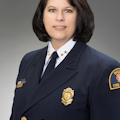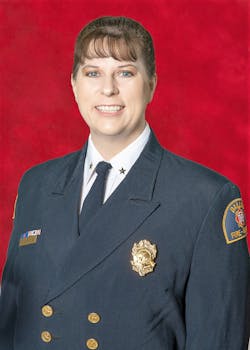Like so many cities across the country, Dallas faces an increasing number of behavioral-health emergencies. As of March 2020, at least 6,000 “repeat callers” were identified, and 4,000 of those live in poverty. Due to inadequate health care and case management, only 1 in 7 were under care for their condition. Additionally, 75 percent were jailed repeatedly.
From 2012 to 2015, the number of mental health emergencies that required an ambulance increased to 3,452 calls from 2,176.
Historically, first responders weren’t trained to handle this demographic, and incarceration or emergency department (ED) hospitalization were the limited options to handle behavioral-health patients. These types of calls often prove dangerous for police and can escalate quickly, resulting in injury to the officer or citizen. Thus, increased law-enforcement resources are required per call—four officers and a supervisor in Dallas.
On Jan. 29, 2018, Rapid Integrated Group Healthcare Team (RIGHT) Care launched a multidisciplinary team that comprises a law-enforcement officer, a paramedic and a behavioral-health clinician. The team is capable of immediate mobilization and response to individuals who are experiencing a behavioral-health crisis in the community. The project was developed by Dr. Marshal Isaacs, who is the medical director for Dallas Fire-Rescue (DFR), and DFR EMS Assistant Chief Norman Seals through a grant with the Meadows Foundation. The focus: reduce the number of behavioral-health calls that are answered by law enforcement; provide a community-based crisis response; and ensure continuity of care while reducing the risk of further law-enforcement or criminal justice involvement and diverting from overcrowded EDs.
A partnership was formed that involves specially trained DFR paramedics, police officers from Dallas Police Department and behavioral-health social workers from Parkland Hospital. The team operates 16 hours per day out of a specially equipped SUV in the South Central Patrol District, which is known for its high number of mental-health emergencies. The police officer ensures scene safety and can perform an APOWW (apprehension by peace officer without warrant) if necessary. The paramedic ensures that the person is medically stable and that no underlying condition, such as hypoglycemia, stroke, head injury, etc., appears as a mental-health emergency. The social worker then determines the best course of action for the person: ED, transport to a behavioral-health facility or a scheduled appointment that’s arranged through a partnership with a local behavioral-health organization. As well as clinically assessing a client, the social worker also might help to find housing or other social service resources.
A Parkland psychiatric social worker is assigned to the city-wide 9-1-1 call center to identify and triage emergency mental health calls, assign appropriate calls for the RIGHT Care team (RCT), and provide support and resources to callers who are having behavioral-health emergencies.
After two years and at least 4,000 responses, including 9-1-1 incidents, follow-ups and referrals, positive results have been quantified. Only 2 percent of all contacts end in arrest (in the South Central district, arrests decreased by 8 percent). Only 5 percent of encounters result in emergency detention, because the social workers can set up more appropriate care. The RCT was able to divert 12 percent away from jail and 22 percent away from ED.
Building blocks
Almost every department struggles with behavior-health emergencies. As a result, departments are trying to find nontraditional means of response. Several departments have experimented with a multidisciplinary team. Many utilize only two of the three disciplines. If your department is interested in setting up such a team, here are a few tips:
- Show Me the Money—Although the RCT program has had positive results, it’s expensive. Search for grants and financial partners to help with funding.
- Create a Clear Structure—Ensure that each discipline knows its role and that ways to maximize each entity’s strengths are considered.
- Data, Data, Data—Everyone today wants data and evidence-based initiatives. Prior to beginning a program, determine: what metrics will be used to measure success; what data will be necessary to prove those metrics; how data will be obtained; and who is responsible for recording data.
- Team Building—Bringing different disciplines together means blending organizational cultures and experience. Spend time learning about each other and about each group’s expectations. This can prevent disagreements and awkwardness in the launch of the program.
About the Author

Tami Kayea
Firefighter/Paramedic
Tami Kayea has been a firefighter and paramedic with Dallas Fire-Rescue Department for 22 years. She has risen through the ranks and is currently a deputy chief. Kayea holds a master’s degree in management and leadership and is a graduate of the Executive Fire Officer Program through the National Fire Academy.
